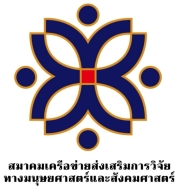THE STUDY OF DIFFERENCES BETWEEN ENTREPRENEUR’S CHARACTERISTICS AND SERVICE STANDARD OF SPA BUSINESS IN BANGKOK AND METROPOLITAN AREA
Keywords:
Characteristics of Entrepreneur, Service Standard, Spa BusinessAbstract
The purposes of this research were to study 1) the level of service standard of spa business in Bangkok and metropolitan area, and 2) the difference in service standard of the spa business in Bangkok and metropolitan area classified by the entrepreneur’s characteristics. The samples consisted of 124 spa business entrepreneurs. The research used questionnaires as a research tool. The statistics used for data analysis were frequency, percentage, mean, and standard deviation. The hypotheses were investigated by Independent sample t-test and One-way ANOVA. The result showed that most of the respondents were female (87.9%), aged between 20 – 30 years (52.4%), graduated bachelor’s degree (58.9%). Most entrepreneur registered their business model as a limited company (48.8%), and earned monthly income between 50,000 – 100,000 bath (34.7%). The overall opinion towards the service standard of spa business was at high level which can be sorted in descending order as follows: personnel standard, administration and management standard, location and environmental standard, product standard, tool and equipment standard, and service standard. The results from hypothesis testing showed that the overall of service standard of spa business in Bangkok and metropolitan area were different according to the characteristics of entrepreneurs in terms of age at 0.05 level of statistical significance. The entrepreneurs can appropriately envisage and adopt the obtained results to improve the service standards as well as other related service components including personnel, tools and equipment, servicing locations, and patterns of business management.
References
กรมสนับสนุนบริการสุขภาพ กระทรวงสาธารณสุข. (2558). รายงานจำนวนสถานประกอบการบริการสุขภาพ. นนทบุรี: กระทรวงสาธารณสุข.
กรมสนับสนุนบริการสุขภาพ กระทรวงสาธารณะสุข. (2559). คู่มือเกณฑ์มาตรฐานสถานประกอบการ สปาเพื่อสุขภาพระดับสากล. นนทบุรี: กระทรวงสาธารณสุข.
กรมสนับสนุนบริการสุขภาพ กระทรวงสาธารณะสุข. (2562). รายชื่อสถานประกอบการที่ได้รับใบอนุญาตประกอบกิจการ. นนทบุรี: กระทรวงสาธารณสุข.
ชาตรี บัวคลี่. (2556). ปฏิวัติโลกธุรกิจหลังสมัย ด้วย “Design”. Veridian E-Journal, 6(4), 99-111.
นวลพงษ์ เสือแก้ว. (2551). การจัดการมาตรฐานธุรกิจสปาเพื่อสุขภาพในเขตกรุงเทพมหานคร. (วิทยานิพนธ์ปริญญามหาบัณฑิต, มหาวิทยาลัยธุรกิจบัณฑิตย์).
นิศาชล รัตนมณี และประสพชัย พสุนนท์. (2562). อัตราการตอบกลับของแบบสอบถามในงานวิจัยเชิงปริมาณ. วารสารมนุษยศาสตร์และสังคมศาสตร์ มหาวิทยาลัยธนบุรี, 13(3), 181-188.
บุคลากรสำนักงานกิจการนักศึกษา มหาวิทยาลัยศรีปทุม. (2554). คู่มือมาตรฐานการให้บริการ. กรุงเทพฯ: มหาวิทยาลัยศรีปทุม.
ฝนทิพย์ ฆารไสว, ณัฐเชษฐ์ พูลเจริญ และไว จามรมาน. (2555). การศึกษาคุณลักษณะของผู้ประกอบการที่ประสบความสำเร็จของธุรกิจโรงแรมในจังหวัดภาคเหนือตอนล่างของไทย. วารสารวิทยาการจัดการและสารสนเทศศาสตร์ มหาวิทยาลัยนเรสวร, 7(1), 39-50.
พรปวีณ์ ศิริรักษ์. (2551). ความพึงพอใจของลูกค้าที่มีต่อการให้บริการของร้านฉัตรฐยาคลินิกแพทย์แผนไทยและสปา อำเภอหัวหิน. (สารนิพนธ์ปริญญามหาบัณฑิต, มหาวิทยาลัยศรีนครินทรวิโรฒ).
ภักดี กลั่นภักดี. (2560). ปัจจัยด้านมาตรฐานของสถานประกอบกิจการสปาเพื่อสุขภาพระดับสากลที่มีอิทธิพลต่อความพึงพอใจในการใช้บริการของนักท่องเที่ยวชาวต่างชาติ. วารสารมนุษยศาสตร์และสังคมศาสตร์ มหาวิทยาลัยมหาสารคาม, 37(3), 97-110.
ละเอียด ศิลาน้อย. (2560). การใช้สูตรทางสถิติ (ที่ถูกต้อง) ในการกำหนดขนาดของกลุ่มตัวอย่างเพื่อการวิจัยเชิงปริมาณในทางมนุษยศาสตร์และสังคมศาสตร์. วารสารวิจัยและพัฒนามหาวิทยาลัยราชภัฏบุรีรัมย์, 12(2), 50-61.
วันวิสาข์ โชคพรหมอนันต์ และวิโรจน์ เจษฎาลักษณ์. (2558). คุณลักษณะของผู้ประกอบการที่มีความสำเร็จในการดำเนินธุรกิจ ของผู้ประกอบการร้านค้าในตลาดน้ำดอนหวาย จังหวัดนครปฐม. Veridian E-Journal, 8(2), 967-988.
ศัชชญาส์ ดวงจันทร์ และนริศา คำแก่น. (2557). ความคาดหวังต่อการเลือกใช้บริการสปาเพื่อสุขภาพและความงาม. วารสารการวิจัยมหาวิทยาลัยราชภัฏสวนดุสิต, 11(3), 27-46.
สุณีย์ ล่องประเสริฐ. (2557). การพัฒนามาตรฐานธุรกิจสปาในอำเภอเกาะสมุย จังหวัดสุราษฎร์ธานีสู่ประชาคมเศรษฐกิจอาเซียน. วารสารวิทยาการจัดการ มหาวิทยาลัยราชภัฏสุราษฎร์ธานี, 1(1), 125-141.
สุธีลักษณ์ ลาดปาละ. (2551). ความเครียดจากการทางานของพนักงานนวดสปาในบริบทของกระบวนการแรงงานและการจัดการองค์การ. กรุงเทพฯ: มหาวิทยาลัยมหิดล.
สุพัชรจิต จิตประไพ. (2552). การสร้างความแตกต่างในธุรกิจบริการ. วารสารเพื่อคุณภาพ, 16(143), 51-54.
อนันต์ เชี่ยวชาญกิจการ. (2556). การพัฒนาคุณภาพบริการสำหรับสถานประกอบการ สปาในกลุ่มท่องเที่ยวแอ็กทีฟบีช ประเทศไทย. (ดุษฎีนิพนธ์ปริญญาปรัชญาดุษฎีบัณฑิต, มหาวิทยาลัยธุรกิจบัณฑิต).
Austin, J., Gutiérrez, R., Ogliastri, E., &Reficco, E. (2006). Effective management of social enterprises: Lessons from businesses and civil society organizations in Iberoamerica. Cambridge, MA : Harvard University Press.
Bharadwaj, S. G., Varadarajan, P. R., &Fahy, J. (1993). Sustainable competitive advantage in service industries: A conceptual model and research propositions. Journal of Marketing, 57(4), 83-99.
Coyne, K. P. (1986). Sustainable competitive advantage: What is it, what it isn't. Business Horizons, 29(1), 54-61
Kirzner, I. (1973). Competition and entrepreneurship. Chicago: University of Chicago Press.
Parasuraman, A., Zeithaml, V. A., & Berry, L. L. (1985). A conceptual model of service quality and its implications for future research. Journal of Marketing, 49(4), 41-50.
Parasuraman, A., Zeithaml, V. A., & Berry, L. L. (1988). SERVQUAL: A multiple-item scale for measuring customer perceptions of service quality. Journal of Retailing, 64(1), 12-40.
Weiers, R. M. (2005). Introduction to business statistic (5th ed.). Belmont, CA: Thomson – Brooks/cole.
Downloads
Published
How to Cite
Issue
Section
License
บทความที่ได้รับการตีพิมพ์เป็นลิขสิทธิ์ของ ผู้เขียน
ทัศนะและความคิดเห็นที่ปรากฏในบทความในวารสารเครือข่ายส่งเสริมการวิจัยทางมนุษยศาสตร์และสังคมศาสตร์จะถือเป็นความรับผิดชอบของผู้เขียนบทความนั้น และไม่ถือเป็นทัศนะและความรับผิดชอบของกองบรรณาธิการ







